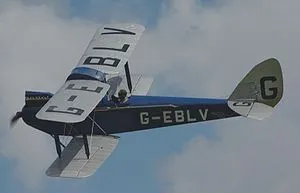Birks, Peter Fraser
Killed in Flying Accident 1938-06-02


Birth Date: unkown date
Born:
Home:
Enlistment:
Enlistment Date: Unknown
Service
RCAF
Unit
115 Sqn- Squadron (RAF)
Despite The Elements
Base
RAF Marham
Rank
Pilot Officer
Position
Pilot Officer
Service Numbers
C/233
de Havilland DH 60 Moth Genet Moth DH 60X DH 60M

(Source Wikipedia)
The de Havilland DH.60 Moth is a 1920s British two-seat touring and training aircraft that was developed into a series of aircraft by the de Havilland Aircraft Company.Wikipedia and Harold Skaarup web page
115 Sqn Despite The Elements ()
No. 115 Sqn was originally formed on Dec 1, 1917 as a heavy bomber squadron and joined the Independent Air Force of the RAF in August 1918. It was disbanded in 1919, then re-formed in June 1937. It formed part of RAF Bomber Command No. 3 Group in WWII. Starting with Handley Page Harrow aircraft, it transferred to Vickers Wellingtons in 1939, which it flew until March 1943, when it transferred to Avro Lancaster B. Mk. II and later B. Mks I and III. Between April 1940 and September 1942 the squadron was seconded to Coastal Command and based at Kinloss, Scotland. It rejoined Bomber Command and flew from Mildenhall, East Wretham and Little Snoring in 1942 and 1943 before settling at Witchford, Cambridgeshire from November 1943 until the end of hostilities.
In April 1940 the squadron made the RAF's first bombing attack on the mainland of Europe, at Stavanger in Norway. In August of 1941 it participated in the service trials of the new navigational aid, GEE, and as a result of its report the device was put into mass production. Overall, in WWII the squadron flew 5392 sorties and dropped about 23,000 tons of bombs. This was the second-highest tonnage of bombs in Bomber Command. The squadron was 3rd in the number of raids in the course of the war. Since it was active over the whole span of WWI, it lost the greatest number of aircraft of any squadron in Bomber Command: it was the only squadron to lose more than 200 aircraft.
 Library and Archives Canada Service Files (may not exist)
Library and Archives Canada Service Files (may not exist) DH 60 Moth
DH 60 Moth Wikipedia Moth Trainer
Wikipedia Moth Trainer Harold A Skaarup Web Page
Harold A Skaarup Web Page